The first European presentation of the Mac Allure occured at Paris JTSE exhbition end of November 2018. In a dedicated Martin booth, their French distributor Algam Entreprises – who took over Martin’s french distribution a year ago and built a team to fully support the brand – hosted demoes and hands-on tests supervised by Markus Klüsener, Martin Pro Product Manager.
Boldly designed as a totally new game on its own, the Mac Allure doesn’t play alongside actual moving head competitors at all. Simultaneously FX projector, compact Spot, and led matrix, the Martin newborn is above all the first of a new family of multibeam projectors boarding the P3 system. A (re-)birth shot by the SoundLightUp camera down below.
With a french-sounding name (several meanings here : pace, speed, or sheer class), very chic and fashionable these days, the Mac Allure looks like a crossover between a Quantum Profile and a Mac Encore : sharp line, compact body, and led technology.
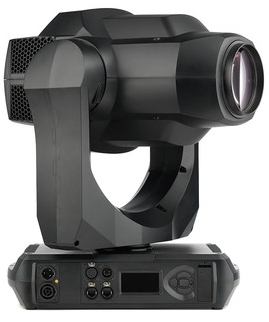
Its very peculiar led source makes its inventors very proud indeed: an array of 7 RGBW 60 W leds, arranged in a cluster, propelled by optics and lenses inspired by the Quantum Profile.
The main feature of the Mac Allure is a certainly limited 12 to 36° zoom, but reaching an incredible focussed image of the 7 led engines. Hence, by just playing with the zoom and focus channels, the Mac Allure completely changes its style indeed.
It goes from a standard Spot beam, appropriate for gobos and prisms combinations, to a matrix projection of its 7 led zones to emulate a video-like pixelation, and then a “Flower” effect while adjusting the focus on the led array.
The 5,000 lumens of the luminous flux predicted by the manufacturer, with a weak CRI of 70, categorise the Mac Allure in the compact projectors category, which seems to suit it well enough.
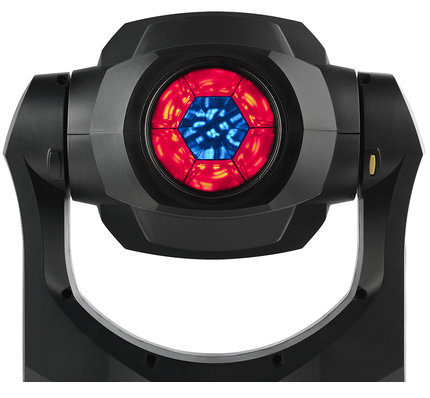
RGBW mix for each of led segment, color temperature control from 2700K to 6500K, virtual color wheel and multicolor macros, the combination of the 7 leds in 6 circular zones plus a central one allow infinite and yet uncharted universes of colored fantasia. The downside of this system is the plain white projection turning into an expressionist blurred cloud with hues of pink and green. The definitive version of the Mac Allure will provide a custom calibration and frost filter to correct that.
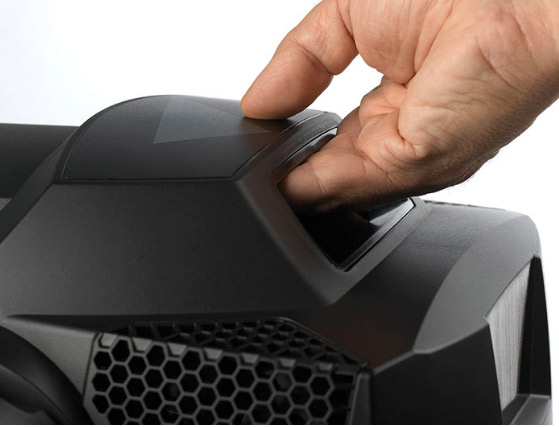
As a welcome addition, the optical modules act as solid teammates. Apart from the 4-facet prism, the iris, the shutter, and the 6 rotating gobos wheel, the Mac Allure provides 2 new skills. Between animation wheel and effects wheels, the 2 superimposed gobo wheels allow multiple morphing projections.
The first one combines “Glass” type figures and a set of blades, while the second one uses reversed vortex. This way, mixing the effects of focussing, colors and optics, the Mac Allure beam multiplies in numerous chromatic kaleidoscopes.
The projector cools down its led source by a combination of passive cooling and active air flow thanks to 4 fans placed at the rear. Thanks to this system, the Mac Allure remains compact, less than 18 kg and 60 cm high, quite noiseless while keeping its internal temperature down, with easy handling, in particular with the rear handle.
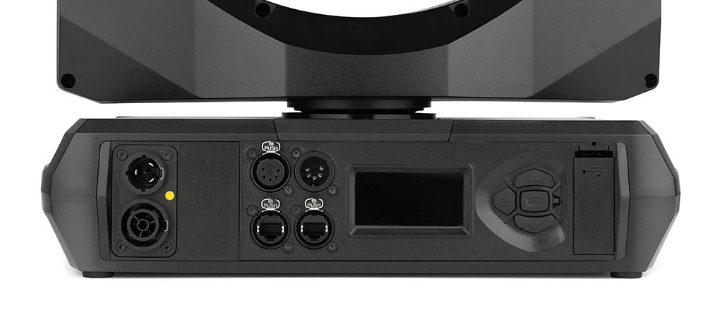
Culmination of all theses functions, a world premiere is the implementation of the P3 protocol inside a moving head. This way, while controlling the projector in 32 or 64 DMX512 channels, the Mac Allure can receive simultaneously via its Ethernet connectors brightness and colors data by video signals sent to all the P3 items connected. This means the Mac Allure can be part of a global mapping set-up alongside Martin led screens and video screens, and simultaneously be part of a DMX set-up. The Mac allure will be available early march 2019 from your usual Martin Professional distributor.
The P3-System
The P3-System is part of the new Martin team, in which all future products will include this protocol : the up and coming Martin by Harman Mac Aura Allure and its 19 led pixels and the Mac Allure Wash, with PC lens, dedicated to color washes.
As a reminder, the P3 is a unique protocol designed by Martin to easily interface DMX and video. This system is already included in the VDO Sceptron and the VC-Strip, to quote the most popular “P3 inside” products. It’s actually a “fixture-mapper” for Martin fixtures, with enhanced possibilities, not only video feeds ta a matrix, but also calibration of remote control of projectors.
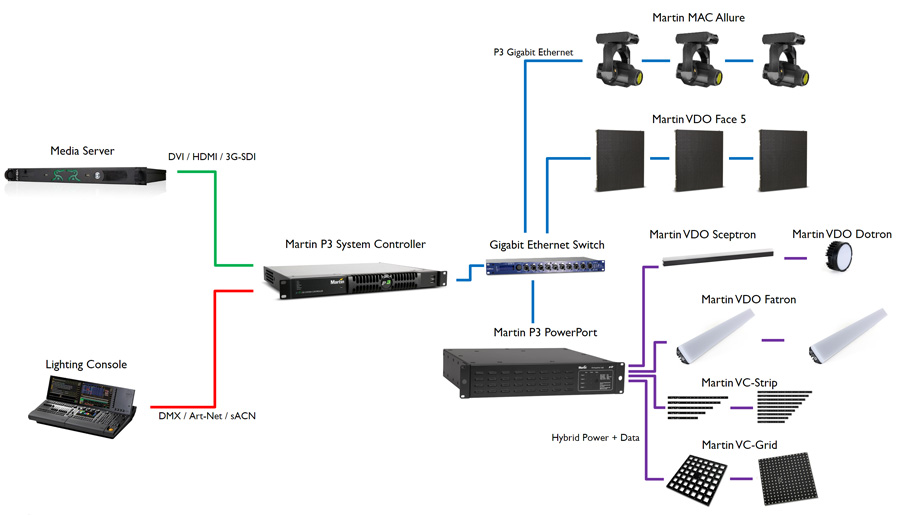
This can be driven by a P3 controller, such as models P3-050, P3-150, P3-300 or P3-PC, with features depending of number of pixels and available video inputs. For some projectors, the additional P3 PowerPort, power supply rack and data processor, is used for the Martin video Creative LED range : VDO Sceptron, PixLines, VC-Grid, Strip & Dot. These different products are linked together by special 4 pin cables.
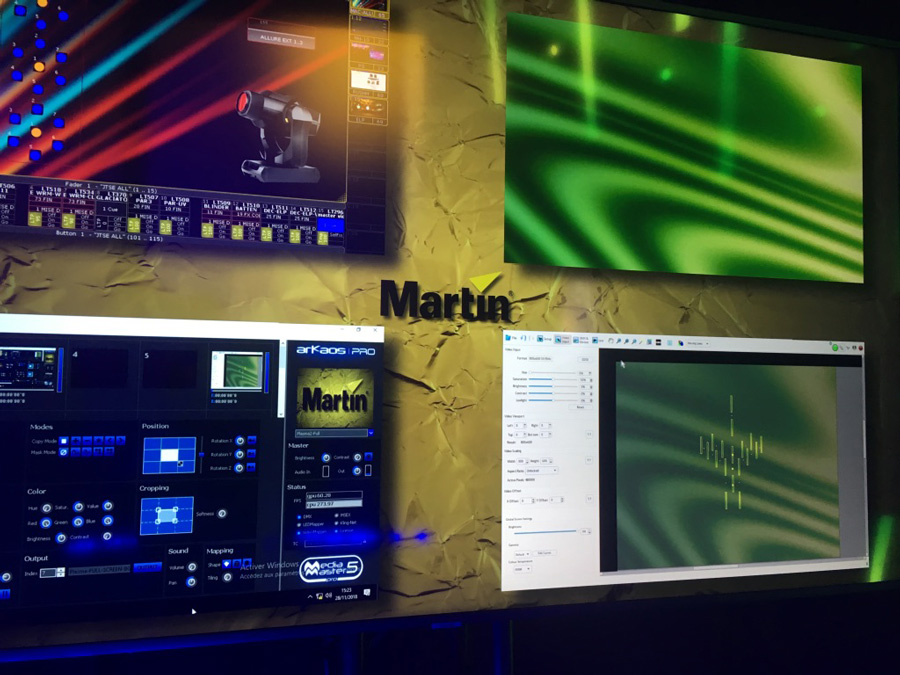
The main advantage of this ecosystem is pure flicker-free and coherent operation for the whole kit of projectors, as the initial design of the P3 continuously calibrates all the elements in the P3 chain to maintain global and total evenness and sync.
To sum up, the P3 protocol allows creating a unique canvas grouping led projectors, video walls and intelligent lighting projectors, and then use the video as both effect and lighting source for all the fixtures.
The P3-System functions have evolved a lot since its launch, with the opportunity of using a second unit in parallel for real-time back-up or designing a mobile scenery with no hassle. The Kinesys moving trusses can send back their indexed positions directly into the P3, and the video feed will adapt to the new positions of the projectors.
At this moment, the projectors can be mapped in 1:1 mode (all pixels equal in size) or Real World (size closer to the projectors), but the next update will allow a step further with a Scaling tool, and presumably en extra Z parameter in pixel positioning. Finally, to compensate for the slight jerkiness of the videos transitions in the Mac Allure, a Smooth Change option will be included.
ELP profile spots
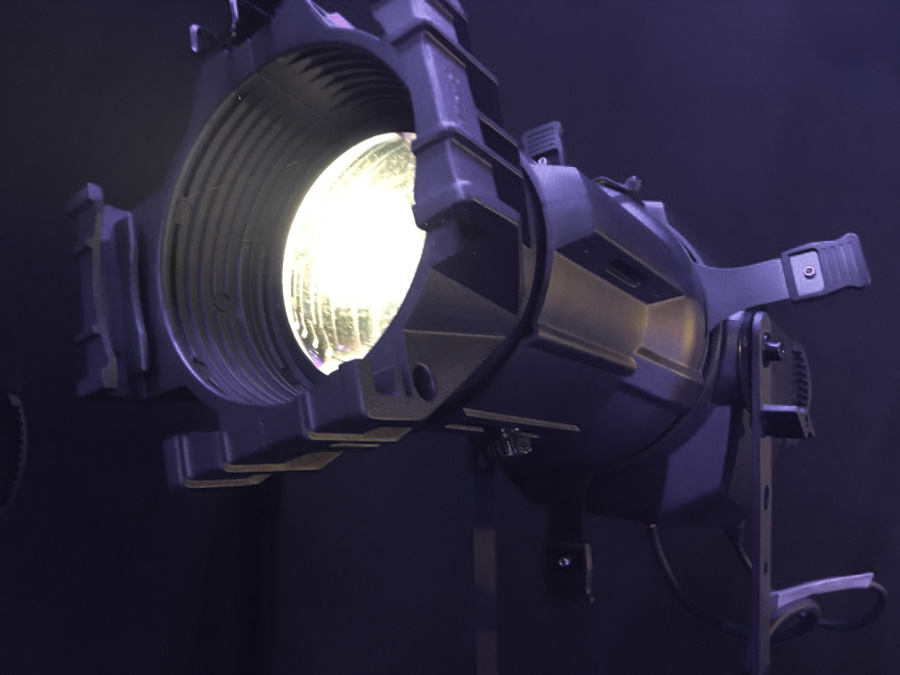
Martin unveils for the first time in its history a led profile spot, in two models: ELP WW and ELP CL.
The profile spot named ELP WW stands for Warm White and is equipped with a white led source, with yet unknown references and specs. It should deliver 7,000 lumens @ 3000K, with a CRI of 97.
The ELP CL contains a RGBAL (red, green, blue, amber and lime) led source and boasts a luminous flux of 6,900 lumens @ 6000K in High Output mode (CRI of 85), or 5,900 lumens in High Quality mode (CRI of 90). The available 19°, 26°, 36° or 50° optics are designed in Denmark for a maximum light output and even beam, without hot spot.
Here are their specifications:
- 16 bits dimmer with a choice of 4 intensity curves.
- 26 color presets, Lee Filters and Rosco equivalent, for the ELP CL.
- « Fine focus » adjustment knob on the upper part.
- Fast Focus function for manual adjustment of intensity (direct to 100 % level if “Enter” touch button pressed for more than 5 seconds).
- Tilt tightening handle positioned slightly apart to give the blades more space.
- Gravity center on yoke alignment.
- Anti-glare correction to prevent yellow or bleu halo around the beam.
- Flicker-free guaranteed light beam.
- Instant electronic strobe.
- Fait weight, less than 10 kg.
They will be available end of 2018, you may ask your Martin distributor.
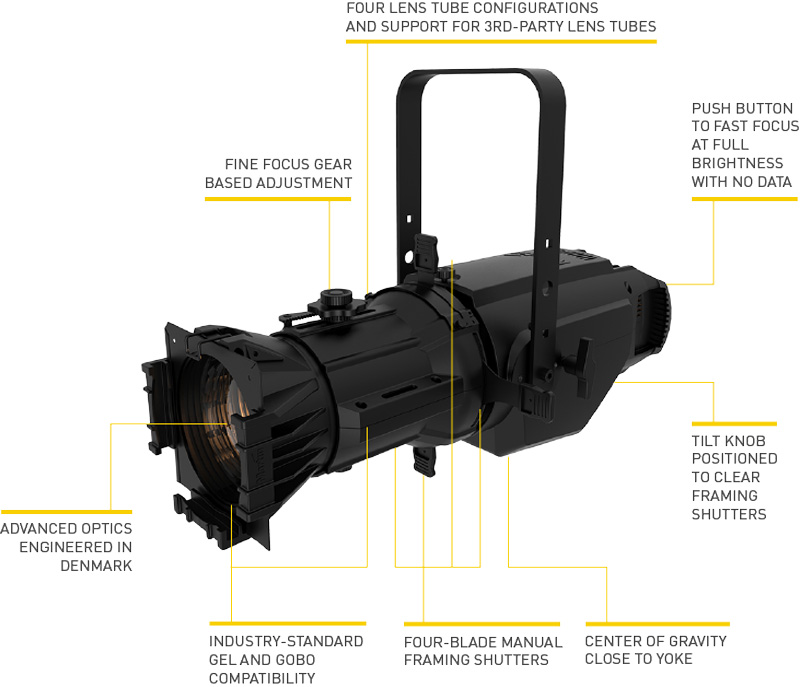
More info on the Martin website







